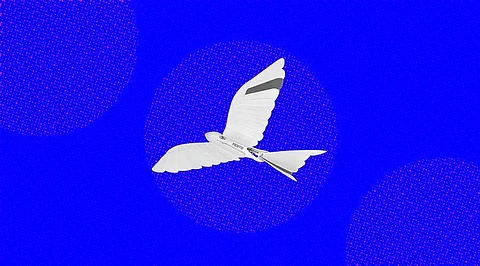
- Insights
- Cryptocurrencies
- Stocks
- White Papers
- Industry
- Geography
- Insights
- Cryptocurrencies
- Stocks
- White Papers
- Industry
- Geography


According to a recent study done by Lund University in Sweden, birds fly more effectively by folding their wings during the upstroke. The results could mean that sect-folding is the coming step in adding propulsive and aerodynamic effectiveness in flopping drones. Indeed the precursors to catcalls — defunct raspberry-like dinosaurs served by folding their bodies during the upstroke, as they developed active flight. Among flying creatures alive at the moment, birds are the largest and most effective. This makes them particularly intriguing for scientists to develop alleviation models for drones. Yet, determining which flopping strategy is stylish requires studies of colorful ways of flopping the bodies. Thus, a Swedish- Swiss exploration team has constructed a robotic-sect that can achieve just that — flopping like a raspberry, and beyond. The issue of perfecting drone dexterity and versatility has directed the attention of numerous roboticists toward flopping flight, a mode of locomotion used by nature's active fliers. Among extant flying creatures, birds are the largest and arguably the most effective, making them particularly intriguing as an alleviation model for drones.
"We've fabricated a robot sect that can exhibit delirium more like raspberry than former robots but also delirium in a way that birds cannot do. By measuring the performance of the sect in our wind lair, we've studied how different ways of achieving the sect upstroke affect force and energy in flight ", says Christoffer Johansson, a biology experimenter at Lund University, " The new robotic sect can be used to answer questions about raspberry flight that would be insolvable simply by observing flying birds. Research into the flight capability to live birds is limited to the flopping movement that the raspberry actually uses", explains Christoffer Johansson. The bio-hybrid robotic sect is partially developed from real feathers, with more advanced kinematic capabilities than former robotic bodies, and is analogous to those of real raspberries. In their former studies, experimenters have shown that birds exhibit delirium more horizontally when flying sluggishly. The new study shows that the birds presumably do it, indeed though it requires further energy because it's easier to produce sufficiently large forces to stay above and propel themselves. These commodity drones can emulate to increase the range of pets they can fly at. In the first case study, the robotic sect is used to totally study the aerodynamic consequences of different upstroke kinematic strategies at different flight pets and stroke airplanes.
The results indicate that sect folding during upstroke not only favors thrust product, as anticipated but also reduces force-specific aerodynamic power, indicating a strong selection pressure on protobirds to evolve upstroke sect folding. It's also shown that thrust conditions likely mandate the sect's stroke tilting. The platoon says their results can also be used in other exploration areas, similar to a better understanding of how the migration of birds is affected by climate change and access to food. There are also numerous implicit uses for drones where this perceptivity can be put to good use. One major purpose might be using drones to deliver goods. A new drive system for flopping sect independent robots has been developed by a University of Bristol platoon, using a new system of electromechanical zipping that does down with the need for conventional motors and gears. This new advance, published moment in the journal Science Robotics, could pave the way for lower, lighter, and further effective micro-flying robots for environmental monitoring, hunting and deliverance, and deployment in dangerous environments. Taking alleviation from and other flying insects, experimenters from Bristol's Faculty of Engineering, led by Professor of Robotics Jonathan Rossiter, have successfully demonstrated a direct-drive artificial muscle system, called the Liquid- amplified Zipping Actuator (LAZA) that achieves sect stir using no rotating corridor or gears. The LAZA system greatly simplifies the flopping medium, enabling the unborn miniaturization of flopping robots down to the size of insects. In the paper, the platoon shows how a brace of LAZA- powered flopping bodies can give further power compared with nonentity muscle of the same weight, enough for a flight where the robot flew across a room at 18 body lengths per second. They also demonstrated how the LAZA can deliver harmonious flopping over further than one million cycles, important for making flopping robots that can take over long-haul breakouts. The platoon anticipates the LAZA to be espoused as an abecedarian structure block for a range of independent nonentity-like flying robots.
